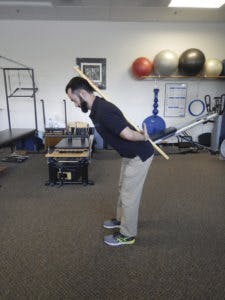Kettlebell Swing
Here it is; a detailed breakdown of how to perform the kettlebell swing with tips to keep in mind to facilitate better technique and avoid injury. Enjoy!
Step 1 – Starting position –Start with feet a little wider than shoulder width with kettlebell on floor approximately one foot in front of your body. Keeping spine straight, sit back hinging at hips, bend knees and reach forward with arms to grip Kettlebell handle with both hands.

Step 2 – Prepare to lift kettlebell – with a fairly tight grip on handle, activate core muscles by drawing belly button in towards spine and gently squeeze shoulder blades together. Tilt kettlebell handle down towards your body.
Step 3 – Pre-swing – Lift kettlebell off floor by gently pulling bell toward you and straightening knees but maintain hinge at hips with spine flat. Now allow kettlebell to swing between your legs with arms moving in a pendulum type movement until arms are resting against trunk and kettlebell is behind or under buttocks with bottom of bell facing behind you.
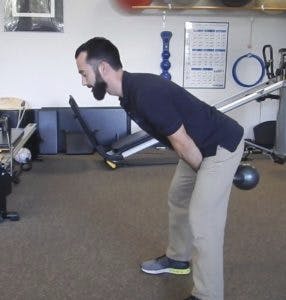
Step 4 – Hip Thrust – Rapidly extend hips standing up by contracting glutes, quads and hamstrings swinging kettlebell out in front of body without lifting bell with arms (while continuing to keep core muscles activated). Full extension should be achieved to where you are standing straight up, arms are near horizontal and bottom of kettlebell is facing away from you.
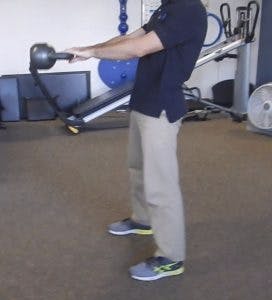
Step 5 – Drop / back-swing – Continue with pendulum type movement with arms straight and allow kettlebell to start swinging back towards body before bending knees. When Kettlebell begins to approach legs hinge hips allowing chest to bend forward towards floor and bend knees slightly until kettlebell completely between legs. At bottom of back swing knees are bent, back is flat, arms against trunk, hips are hinged and kettlebell is behind or under buttocks and bottom of bell facing behind you.
Step 6 – Keep swinging that iron. Repeat steps 5 and 6 for specified number of repetitions.
Tips to Remember
• Back flat / spine straight
• Core muscles gentle activated throughout movement
• Feet remain flat on floor
• Hinge / bend at hips and bend knees mildly
• Do not lift with arms
• Utilize legs for a hip thrust to power movement
• Maintain a pendulum type movement with kettlebell
**Recommend working directly with a professional trainer or physical therapist until you learn correct form.



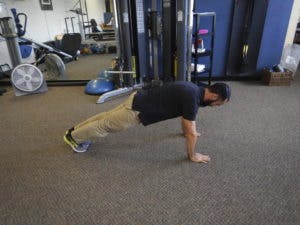
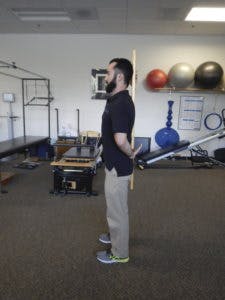 d while maintaining a neutral spine position which are both needed for a swing. Perform exercise 15 times.
d while maintaining a neutral spine position which are both needed for a swing. Perform exercise 15 times.